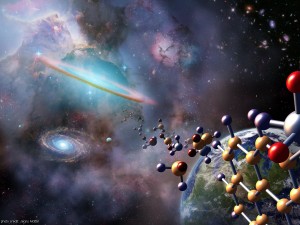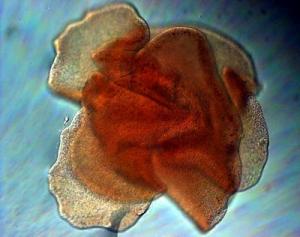___________________________________________________________
These
headlines attest to the fact the quest for the origin of the
first living matter is still important. As
scientific understanding has changed, the ways in which this quest has been
framed have taken new directions. In each generation the approach to the subject
has been influenced by contemporary theories of biology, chemistry and physics,
the latest tools and techniques, and the religious and political culture of the
times. Progress is slow and each public announcement receives much attention.
The question of the
origin of life
has a long and controversial history. Many readers will come with a point of
view - perhaps looking for material to bolster their convictions. Others will
come with questions as they seek to come to an understanding that fits their
theological position.
The ASA takes seriously the work of scientists
and biblical scholars. It is all too easy for the Christian to downplay the work
of scientists or for scientists to dismiss Christians as out of touch with
reality. This page offers insights from various points of view rather than
the answer to this intriguing subject.

For the younger student!
Try this experiment
in the warm spring or summer months:
1. Take a ripe banana or other soft fruit, cut it in half, and place it in
an open glass jar.
2. Put the jar (still open) with the fruit in it in an open window for a
couple of days.
3. Place a cap on the jar and leave it in a warm (not hot) area.
4. Observe what happens to the fruit. In a few days, you should have some
"spontaneously generated" flies in the jar!
Why is this experiment poorly designed
to provide evidence for "spontaneous generation.'?
|
Basic Concepts
While
all agree that the origin of the
first life on earth is a mystery rooted in speculation and /or religious
conviction, three lines of investigation have emerged over the years to bolster
the probability that such an event naturally occurred.
- The oldest approach -
spontaneous generation - sought to
demonstrate "contemporary examples" of living matter emerging from inorganic
matter or in new forms from living material. The late 19th Century British
scientist
Henry C. Bastian
was the last to seriously support this notion.
- A second approach currently important has sought to
establish chemical and physical environments on the earth which could produce
life and plausible reaction sequences which lead to living material. The
classical paper of
Stanley Miller (1953) demonstrated
that some amino acids can be chemically produced from ammonia, water and
methane in an electrical discharge.
-
- An allied branch of research,
panspermia
(or exogenesis)
seeks to discover evidence
 that
life on earth came originally from an extraterrestrial body which had an
environment more favorable to the origin of life than that of the early Earth.
that
life on earth came originally from an extraterrestrial body which had an
environment more favorable to the origin of life than that of the early Earth.
- A third approach (little explored) seeks to
synthesize
living matter from smaller non-living organic molecules.
Today, an international set of research groups
actively pursues various scenarios leading to a self-replicating cell.
Fame and fortune
await the individual or group that can first successfully accomplish
this elusive challenge.
A May 21, 2001 paper,
When Physicists Tried to Explain Evolution, Biologists Cried Foul
illustrates the problems in reaching outside one's scientific specialty.
As scientists continue their efforts it is well to keep in
mind Christian de Duve's
comment
:
"An important rule in reconstructing the
earliest events in life's history is to assume that they proceeded
without the benefit of foresight. Every step must be accounted for in terms of
antecedent and concomitant events. Each must stand on it's own and cannot be
viewed as a preparation for things to come. Any hint of teleology
must be avoided." American Scientist September-October, 1995
Today,
with few exceptions, the reaction of evangelicals to claims that life emerged
from non-living matter through natural processes ranges from deep skepticism to
ridicule. This pessimistic position is framed on probability
considerations, scientific grounds, philosophical arguments, and Biblical
passages which seem to indicate that life came directly as a result of
God's action. However, a few evangelicals suggest that scripture may be read as
indicating that created matter came with the potential to produce life.
Both groups believe that God did it - the question is whether
the or
a plausible mechanism can be demonstrated for an inaccessible event. !
Return
Most recent addition: 8/14/2012






 that
life on earth came originally from an extraterrestrial body which had an
environment more favorable to the origin of life than that of the early Earth.
that
life on earth came originally from an extraterrestrial body which had an
environment more favorable to the origin of life than that of the early Earth.